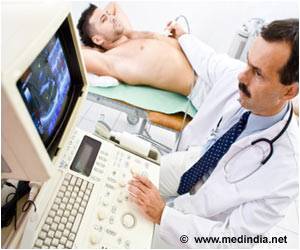Diaphragm pacing stimulation in spinal cord injury patients doesn't just successful in weaning patients from mechanical ventilators, but also help them respire independently

One of the inventors of DPS and an author of the new study is Raymond Onders, MD, of University Hospitals (UH) Case Medical Center. DPS gained national attention in 2003 when Dr. Onders, Director of Minimally Invasive Surgery at UH, implanted the system in the late actor Christopher Reeve, who had a traumatic spinal cord injury (SCI) from a horse-riding accident.
The new study examined the records of 29 patients, average age 31, at 16 hospitals in the United States where DP implantation is approved. SCIs were caused by a variety of accidents, including car accidents, diving, gunshot wounds, falls, and athletic injuries. Elapsed time from injury to surgery was 40 days, which was considerably shorter than an initial FDA trial in which patients did not have DP testing and surgery for more than a year after injury. All but two patients were men. A goal of this study was to determine if earlier testing and DP implants provided benefit.
Of the patients whose diaphragm muscles responded to stimulation, 16 of 22 patients (72 percent) were completely free of ventilator support in an average of 10 days. Of the remaining six patients, two had a delayed weaning of six months, three had partial weans using DP at times during the day (One patient successfully implanted went to a long-term acute care hospital and subsequently had life-prolonging measures withdrawn.) Seven of the 29 patients were found to have non-stimulatable diaphragms from nerve damage.
Eight patients (36 percent) had complete recovery of respiration, and DP wires were removed.
"This study provides several important observations," said Dr. Onders, who is also Professor of Surgery at Case Western Reserve University School of Medicine. "Most notably, laparoscopic diaphragm mapping – an electronic reading of the diaphragm nerves – is safe and can be performed in multiple centers with success. In addition, early diaphragm mapping can quickly determine if a phrenic nerve injury is complete, allowing for early ventilator planning and prevention of weaning trials if we find the patient will not be able to be weaned from the ventilator. Finally, DP can successfully wean traumatic cervical SCI patients as evidenced by 72 percent of the implanted patients being completely weaned from ventilators and 36 percent with complete recovery and DP removal.
Advertisement
Traumatic spinal cord injuries (SCIs) that require chronic ventilator dependence are relatively rare: Less than four percent or 480 cases out of the estimated 12,000 traumatic SCIs occurring annually in the United States.
Advertisement
DPS is made by Synapse Biomedical, Inc., a company co-founded by Dr. Onders and located in Oberlin, Ohio. Dr. Onders, UH Case Medical Center, and Case Western Reserve University have intellectual property rights in Synapse.
Source-Eurekalert














